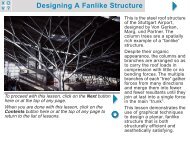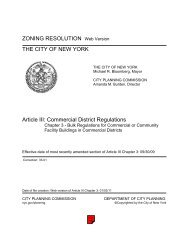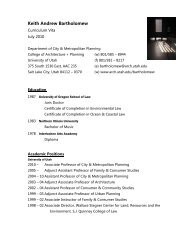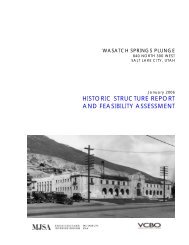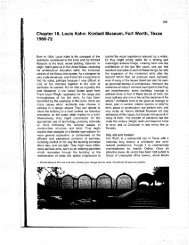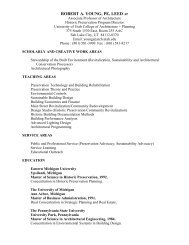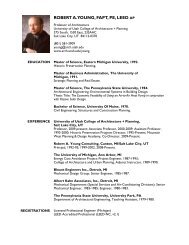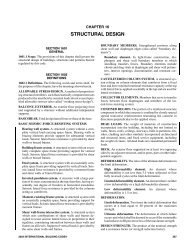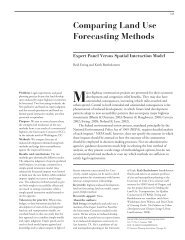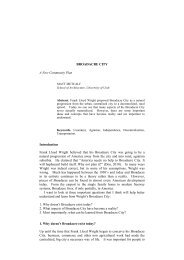The Josephine Baker House: For Loos's Pleasure Farčs el-Dahdah ...
The Josephine Baker House: For Loos's Pleasure Farčs el-Dahdah ...
The Josephine Baker House: For Loos's Pleasure Farčs el-Dahdah ...
You also want an ePaper? Increase the reach of your titles
YUMPU automatically turns print PDFs into web optimized ePapers that Google loves.
Marquis de Trtmicour r<strong>el</strong>ies on the machinations of his<br />
house to seduce his guests and, ultimat<strong>el</strong>y, remain a bach<strong>el</strong>~r.~<br />
Bastide's fiction allegorizes a machine that sites as<br />
w<strong>el</strong>l as orchestrates a plot of seduction between the two<br />
protagonists. <strong>The</strong> story is that of a wager between the Marquis<br />
and MClite, in which he dares her to visit his petite<br />
maison and by that alone inevitably be seduced. <strong>The</strong> visit<br />
proceeds as an argument between the Marquis' impatience<br />
to seduce and Mtlite's stalling technique of wanting to see<br />
everything. Her resistance, however, aimed at teasing the<br />
Marquis by inspecting with much curiosity every detail,<br />
triggers the house to reveal its<strong>el</strong>f r<strong>el</strong>ative to a topography of<br />
affects - as a trap meant to capture all her senses. <strong>The</strong><br />
architectural details on which MClite lingers are willingly<br />
displayed and described, for they are precis<strong>el</strong>y the stages a<br />
resistant guest must go through in order for the seductive<br />
machine to work. Mtlite is disconcerted when music is<br />
suddenly heard from behind secret pan<strong>el</strong>s. She is inebriated<br />
by perfumes emanating from the ether of varnishes. She is<br />
blinded by bright spectacles of refracted chand<strong>el</strong>ier's and<br />
shining surfaces covering entire walls. Troubled, she bar<strong>el</strong>y<br />
eats from a dining table that rotates hypnotically and collapses<br />
into the ground. And just as the reader begins to<br />
suspect that the Marquis may be falling in love, Mtlite<br />
succumbs to being touched and looses the wager.<br />
Admitting that architecture will remain amorous as long<br />
as there are lovers, let us now leap across two centuries<br />
to describe Adolf <strong>Loos's</strong> own bach<strong>el</strong>or machine as an<br />
admirateur's letter that was never sent. <strong>For</strong> like Trtmicour<br />
impatient to touch his guest Mtlite, Loos instrumentalizes<br />
a building as a tactile extension of his senses in order to<br />
covet the exoticized body of an absent <strong>Josephine</strong> <strong>Baker</strong>.<br />
Why do I once again turn to writing?<br />
B<strong>el</strong>oved, one mustn't ask such a clear question,<br />
<strong>For</strong> the truth is, I have nothing to t<strong>el</strong>l you,<br />
All the same, your dear hands will touch this note.''<br />
Young Werter's inquiry as to why one writes a love letter<br />
reveals a paradoxical dimension inherent in any amorous<br />
correspondence: a letter is like a signifier that can convey<br />
an amorous message even though it may be empty or say<br />
nothing at all. It is the instrument of a tactile extension just<br />
as it transmits the language of devotion. Roland Barthes<br />
distinguishes, in fact, between two forms of love notes:<br />
there is the amorous correspondence, where one seeks to<br />
"defend positions, insure conquests, [and thereby] articulate<br />
the image of the Other in various points that the letter<br />
will try to touch," and there is the love letter proper, where<br />
one is pur<strong>el</strong>y affectionate, engaging the Other in a "r<strong>el</strong>ationship,<br />
not a corre~pondence."~~ <strong>The</strong> enterprise of writing<br />
amorously can thus be "both empty (encoded) and expressive<br />
(laden with a yearning to express one's desire)."12 A<br />
note sent to the object of one's affections is a d<strong>el</strong>iberate<br />
extension of one's language, an attempt to touch the Other<br />
("as if my words were fingers") despite the message conveyed:<br />
the irreducible "I love In a letter, words need<br />
say nothing at all, "save that it is to you that I t<strong>el</strong>l this nothing"<br />
and, paradoxically, it is via this "nothing" that one<br />
overcomes the Other's absence.14<br />
<strong>The</strong> house that Adolf Loos designed in 1928 at the sup-<br />
posed request of <strong>Josephine</strong> <strong>Baker</strong> is precis<strong>el</strong>y this: a love<br />
note. It is an epistolary attempt to detail her image in "vari-<br />
ous points" through a kind of writing that stretches a third<br />
skin between the body of the architect and that of the<br />
dancer. <strong>The</strong> house is an apparatus (like the note) through<br />
which one can somehow rub against, or trap, a dancer's<br />
exoticized body. It is a building designed as a tactical enter-<br />
prise, as the imaginary "prose" of an amorous conquest in<br />
between whose lines (in between the stripes of its fa~ades<br />
and the distribution of its rooms) one is to decode a longing<br />
to signify desire. In other words, this house corroborates<br />
someone's yearning to touch the absent body of <strong>Josephine</strong>.<br />
And, in the absence of hardly any information regarding<br />
the circumstances of Adolf <strong>Loos's</strong> ever having met<br />
<strong>Josephine</strong> <strong>Baker</strong>, the architect's project (a mod<strong>el</strong> and a few<br />
drawings) is the principal document of this longing, shared<br />
by an entire generation, for the famous American dancer.<br />
An account that does describe Loos meeting <strong>Josephine</strong> and<br />
"verifies" that a house may indeed have been commissioned<br />
appears in Claire <strong>Loos's</strong> biography, Adolf Loos Privat. Mrs.<br />
Loos (nee Beck) cites her husband quoting <strong>Josephine</strong>, as the<br />
dancer complained about another architect's plans for a<br />
house she wished to build. To his surprise, Loos realized<br />
that she was unaware that he, too, was an architect and, in<br />
response, proposed his own services:



